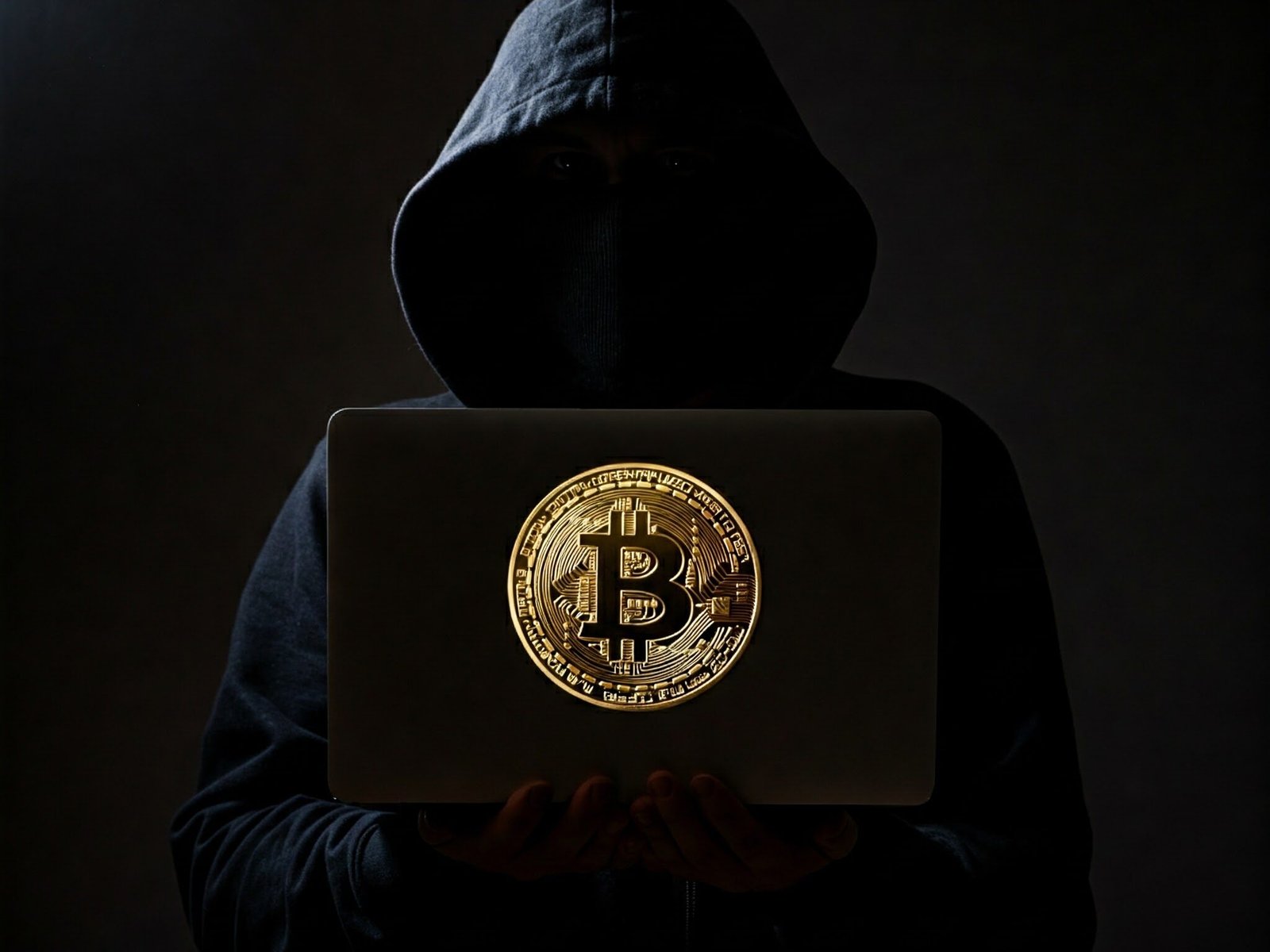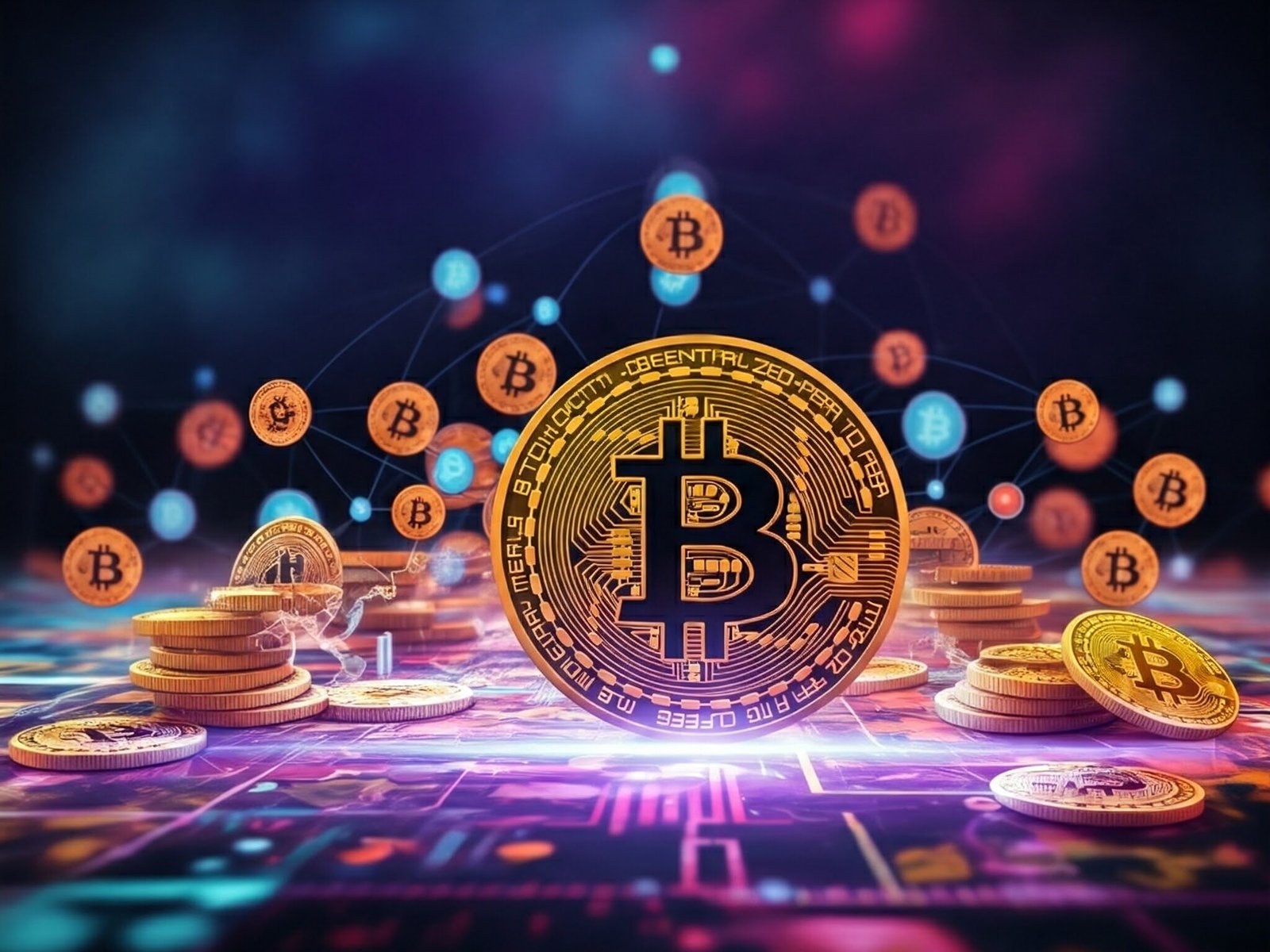The world of cryptocurrency is complicated, and the mystery of Satoshi Nakamoto, the creator of Bitcoin, is one of its biggest puzzles. We still don’t know who Nakamoto is – it could be one person or a group of people.
Even though Bitcoin has become famous worldwide, Nakamoto chose to stay anonymous and disappeared without a trace. This has led to many investigations and theories about who Nakamoto really is.
This exploration looks into the mystery of Satoshi Nakamoto. We will look at how Bitcoin was created, the search for its creator, and what Nakamoto’s anonymity means for the future of cryptocurrency.
Celebrating the Evolution of a Financial Revolution

Genesis Block: Bitcoin’s Origin
On January 3, 2009, the Bitcoin network came to life when the Genesis Block, the very first block in the blockchain, was mined. This marked the beginning of a revolutionary technology that could change how we think about money and finance. The Genesis Block even had a hidden message, taken from a headline in The Times newspaper: “Chancellor on brink of second bailout for banks.” Many believe this was a way to remember the date and a comment on the 2008 financial crisis, which was happening when Bitcoin was first created.
Bitcoin’s creator, Satoshi Nakamoto, remains an enigma. Was it one person or a group? Their true identity is one of the biggest puzzles in the world of cryptocurrency.
Early Cryptocurrency Innovations
Bitcoin was a groundbreaking invention, but it was not the first attempt to create digital money. However, it was the first cryptocurrency that truly worked without any central control. This made Bitcoin incredibly innovative because it was the first time a decentralized cryptocurrency was successfully put into practice.
Bitcoin’s design was inspired by earlier ideas. One major influence was b-money, suggested by Wei Dai around 1998. B-money envisioned a system with anonymous transactions. Another was Bit Gold, proposed by Nick Szabo in the same year, which explored the concept of using computer power to generate “proof of work” tokens. Satoshi Nakamoto, Bitcoin’s creator, combined these ideas with other advancements in cryptography to build a secure and independent digital currency system.
The 2008 White Paper
In October 2008, a white paper called “Bitcoin: A Peer-to-Peer Electronic Cash System” was published by Satoshi Nakamoto. This document described a decentralized digital currency that would work independently of governments and financial institutions. The white paper introduced the blockchain, a public ledger that records all Bitcoin transactions securely and transparently. This solved the “double-spending problem,” a major challenge for previous digital cash attempts.
Bitcoin’s Journey Over the Years
Bitcoin has come a long way. It started as a niche technology known mainly by experts and has become a global financial force. Its value has increased dramatically, attracting investors, entrepreneurs, and even governments. Early adopters saw the potential of a currency free from central bank control and traditional financial systems. This led to more and more people using Bitcoin, with milestones like the Bitcoin Pizza Day in 2010, where 10,000 BTC were used to buy two pizzas. This was the first documented commercial transaction using Bitcoin.
Bitcoin’s journey has been full of:
- Volatility: The price of Bitcoin has gone up and down dramatically.
- Innovation: The blockchain technology behind Bitcoin has inspired many other cryptocurrencies and applications.
- Regulation: Governments around the world have been figuring out how to regulate Bitcoin and other cryptocurrencies, with some banning it and others, like El Salvador, making it legal tender.
Bitcoin’s journey shows its resilience and potential to disrupt traditional financial systems.
Nakamoto’s anonymity underscores Bitcoin’s core principle: decentralization. No single person or institution controls it.
The Enigmatic Figure
Hiding Behind the Name
It is widely believed that “Satoshi Nakamoto” is not an actual name, but a pseudonym used to conceal the identity of the individual or group who created Bitcoin. This makes it extremely difficult to determine the truth about who created Bitcoin and their reasons for remaining anonymous.
Online Clues
At first, Nakamoto communicated with other developers online about Bitcoin. These online discussions mainly focused on technical aspects, such as how the Bitcoin code functioned. He did not disclose any personal information. However, some people have observed clues about Nakamoto in these online messages, like his use of British English. This has led to speculation about his identity.
Vanishing into Thin Air
In 2010, Nakamoto ceased communication with the Bitcoin community. His final message was an email stating he was “moving on to other things.” The reason for his disappearance remains unknown. Perhaps he wanted Bitcoin to develop independently, or maybe he was concerned for his safety. Regardless of the cause, his disappearance remains an enigma.
The Hunt for Satoshi Nakamoto

The Search for Satoshi: Who Could It Be?
Many people have been suggested as the real Satoshi Nakamoto. These include experts in codes, computers, and even economics. Some were suspected because of their past work, while others were guessed at based on their online writing or behavior.
Dorian Nakamoto
In 2014, Newsweek magazine said that a Japanese-American man named Dorian Nakamoto was the creator of Bitcoin. This caused a media frenzy, with reporters even camping outside his house! But Dorian Nakamoto strongly denied having anything to do with Bitcoin. He later explained that he misunderstood the reporter’s questions, thinking they were about his old job as an engineer.
Craig Wright
This Australian computer scientist has been one of the most outspoken people claiming to be Satoshi Nakamoto. He has said many times that he created Bitcoin and even provided what he called “cryptographic proof.” However, many people in the Bitcoin community doubt him. They have pointed out problems with his story and a lack of strong evidence. Wright has also been involved in legal battles about his claims, including a case where he said he owned all the rights to Bitcoin. In 2024, a UK court judge ruled that Wright was not Satoshi Nakamoto and had given the court fake documents.
Hal Finney
This man was a pioneer in the world of cryptography and one of the first people to use Bitcoin. He was the first person to receive a Bitcoin transaction from Satoshi Nakamoto himself! Finney was also known for his work on “reusable proof-of-work systems,” which was a concept that came before Bitcoin. However, Finney always denied being Nakamoto. He was mainly known for his early support and contributions to the cryptocurrency.
Nick Szabo
This computer scientist and cryptographer is another person who has been connected to Satoshi Nakamoto. Szabo is known for his work on “Bit Gold,” which was a concept similar to Bitcoin in some ways. While Szabo has denied being Nakamoto, his work on Bit Gold and his deep understanding of cryptography have made him a popular subject of speculation.
Peter Todd
A 2024 HBO documentary called “Money Electric: The Bitcoin Mystery” suggested that Peter Todd, a former Bitcoin developer, was actually Satoshi Nakamoto. This claim caused a lot of excitement and debate. The documentary highlighted some interesting points, such as Todd’s early involvement with Bitcoin and a forum post that seemed to connect him to Satoshi. However, Todd has strongly denied these claims. While the documentary generated a lot of discussion, it did not definitively prove that Todd created Bitcoin.
Stephen Mollah
In October 2024, Stephen Mollah held a press conference in London where he claimed to be Satoshi Nakamoto. Mollah presented what he described as “timestamped” copies of Satoshi’s original forum posts as evidence. He stated that he decided to reveal his identity due to legal challenges and a desire to tell the world the truth. However, many people are skeptical of Mollah’s claims because he has not provided any concrete evidence.
The Silk Road Connection
In the early days, Bitcoin was linked to Silk Road, an online marketplace known for illegal goods. This led some people to believe that Nakamoto might have had criminal intentions. Some even thought Nakamoto could be a group of people working on the dark web, using Bitcoin for illegal activities. While the connection to Silk Road definitely made Bitcoin more well-known and caught the attention of law enforcement, it’s important to remember that Bitcoin itself is just a technology. It can be used for many things, not just illegal activities. Saying that Nakamoto had criminal intentions because Bitcoin was used on Silk Road is just speculation and not based on facts.
The Role of Media and Public Interest
The mystery of Satoshi Nakamoto has really captured the public’s attention, with media outlets eager to find out the truth. Books, documentaries, and tons of articles have been made about the search for Nakamoto, making the mystery even bigger. All this attention has made it even harder to figure out if any of the claims about Nakamoto’s identity are true.
From news investigations to documentaries and countless online articles, the media’s fascination with unmasking Satoshi Nakamoto has only intensified the mystery. Will this digital age enigma ever be solved?
The Impact of Anonymity

Decentralization and Ideological Purity
Many people see Nakamoto’s anonymity as a key part of Bitcoin’s philosophy. It strengthens the idea of a decentralized system that works independently, encouraging trust in the technology itself, not in a central authority. This aligns with the ideas of privacy, individual control, and freedom from government or corporate control, which were important in Bitcoin’s early development.
The Allure of the Unknown
The mystery around Nakamoto’s identity has definitely made Bitcoin more appealing and interesting. It has created a legendary figure, giving Bitcoin an air of rebellion and innovation. This attracts people who like its anti-establishment image.
The “Patoshi” Pattern
When experts looked closely at the Bitcoin blockchain, especially the early blocks, they found a distinct pattern in how Bitcoin was distributed. This pattern, called “Patoshi,” suggests that one person, probably Satoshi Nakamoto, mined a large portion of the early Bitcoin. It’s estimated that this person might have around 1 million BTC, potentially making them one of the wealthiest people in the world. The “Patoshi” pattern makes people wonder how these holdings could affect the Bitcoin market if they were ever sold.
Security Concerns
While anonymity has its good points, it also raises concerns about possible security risks. If Nakamoto’s identity were revealed and they possessed a significant amount of Bitcoin, it could make the market vulnerable to manipulation or attacks. This potential for one person to have so much power has been a source of debate in the Bitcoin community.
The Debate Over Satoshi’s Fortune
The estimated value of Satoshi Nakamoto’s Bitcoin holdings has led to discussions about whether these coins should be sold. Some argue that selling them could destabilize the market and cause panic selling. Others think the funds could be used for good causes or to support Bitcoin development. The ethical implications of controlling so much Bitcoin adds another layer of complexity to the ongoing debate about Nakamoto’s identity and legacy.
The Future of the Search
Will we ever know who Satoshi Nakamoto really is? That’s a question without a clear answer. Some people believe that as technology gets better and investigations continue, the truth will come out eventually. Others think that Nakamoto’s anonymity is important for Bitcoin’s success and that their identity should stay a secret. The search for Satoshi Nakamoto will probably go on, driven by curiosity, the potential for financial gain, and the desire to solve one of the biggest mysteries of the digital age.
Analysis of early Bitcoin transactions suggests Nakamoto may hold a massive amount of Bitcoin, potentially worth billions.
Satoshi Nakamoto’s Estimated Net Worth
It’s estimated that Nakamoto mined one million Bitcoins early on. As of January 2025, one Bitcoin is worth more than US$95,000. If Nakamoto still has their Bitcoin wallet, it would be worth around US$95 billion today, making Nakamoto one of the richest people in the world.
Some believe that Nakamoto may still be around and has been quietly selling some of their Bitcoin since 2019. This theory comes from looking at Bitcoin transactions and suggests that Nakamoto, or someone close to the early Bitcoin world, may still be active in the cryptocurrency market while keeping their identity secret.
Conclusion
The real identity of Satoshi Nakamoto is a huge mystery in the world of finance. Even though many have tried to find out who they are, Nakamoto has stayed anonymous. Whether it’s one person or a group of people, their creation of Bitcoin has changed the financial world forever. The mystery around their identity just makes Bitcoin and the world of cryptocurrency even more interesting.
Frequently Asked Questions (FAQs)
What is Bitcoin?
Bitcoin is a digital currency that enables peer-to-peer transactions, eliminating the need for intermediaries like banks. It operates on a decentralized network known as a blockchain, which ensures transparency and security.
Why is Satoshi Nakamoto’s identity a mystery?
Nakamoto used a pseudonym and primarily communicated online, leaving minimal clues about their true identity.
Has anyone claimed to be Satoshi Nakamoto?
Yes, several people have claimed to be Nakamoto, but none have proven it. Some famous examples include Dorian Nakamoto, Craig Wright, and, more recently, Stephen Mollah.
Why is Nakamoto’s anonymity important?
Nakamoto’s anonymity supports the idea that Bitcoin is decentralized and not controlled by any one person or organization. It also aligns with the idea of privacy and freedom from central control.
Will we ever know who Satoshi Nakamoto really is?
It’s impossible to say for sure if Nakamoto’s identity will ever be revealed. The mystery continues to intrigue people and fuel speculation.
Articles referenced:
History of bitcoin, Wikipedia, 2 Jan. 2025.
Satoshi Nakamoto, Britannica, 19 Dec. 2024.
Satoshi Nakamoto, Wikipedia, 1 Jan. 2025.
Man denies being mysterious inventor of Bitcoin, BBC News, 9 Oct. 2024.
Bitcoin, Wikipedia, 2 Jan. 2025.
Who Is Satoshi Nakamoto?, Investopedia, 3 Oct. 2024.
What is Satoshi Nakamoto’s Net Worth?, Charts.Bitbo.Io. (Accessed: 2 Jan. 2025.)
The People and Forces Behind Bitcoin: Celebrating 16 Years Since the Genesis Block, BeInCrypto, 3 Jan. 2024.
I Went To Meet the ‘Real’ Satoshi Nakamoto in London. It Was… Revealing, DL News, 31 Oct. 2024.
Coinbase May Know Satoshi Nakamoto Identity as Bitcoin Creator Cashes Out, FinanceFeeds, 26 Nov. 2024.
Unraveling Satoshi Nakamoto’s Early Mining Activities: The Patoshi Pattern Mystery, Bywire News, 3 Oct. 2024.
Cryptocurrency, Wikipedia, 2 Jan. 2025.





